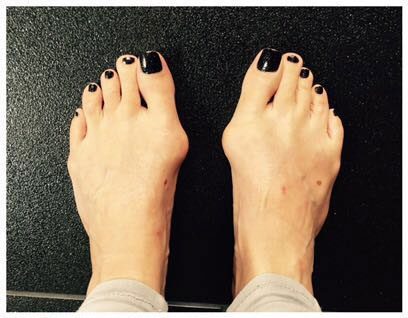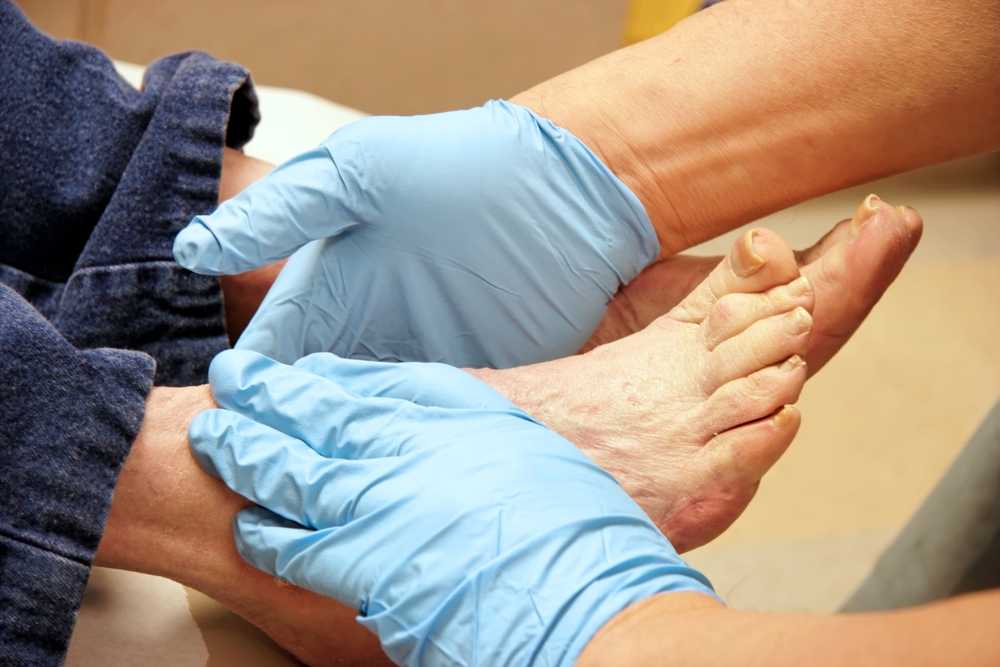The arthritis is a painful condition affecting the joints. It can appear anywhere on the body, but is more common in the hands, knees, hips, and feet. Different types of arthritis can develop in the toes, and treatment will depend on the type you have.
What is toe arthritis?
Arthritis is the term used to describe more than 100 diseases that cause inflammation in and around the joints and nearby tissues. Arthritis of the toes can occur in any of the joints of your toes, but it often affects the joint of the big toe. Arthritis can be caused by a variety of reasons, such as:
- Past injuries or trauma (such as a fracture or sprain);
- General wear and tear caused by the years;
- Overuse injuries;
- Being overweight;
- Family history of arthritis;
- The frequent wearing high heels, which can damage the finger joint;
- An autoimmune disease affecting joint health.
Big toe osteoarthritis, also known as hallux rigidus, is a degenerative joint condition that affects the metatarsophalangeal joint at the base of the big toe. This is the most common form of arthritis in the feet.
Osteoarthritis it occurs when the protective cartilage that covers the ends of the bones in the joint gradually wears away over time. What is happening? The cartilage in the joint at the base of the big toe begins to deteriorate, causing pain, stiffness and reduced range of motion in the big toe. These processes develop gradually over time.

The exact cause of hallux rigidus is not always clear, but several factors can contribute to its development. They include:
- Excessive or repetitive stress on the joint, often associated with activities that involve excessive bending or pushing off of the toes, such as running or dancing.
- Injury or trauma to the toe, such as a fracture or sprain.
- Structural abnormalities, such as a longer first metatarsal bone or an abnormal arch of the foot, which can alter the mechanics of the joint.
- Genetics and family history of osteoarthritis.
Symptoms of big toe arthritis

If you suspect you have arthritis in your toes, there are a number of telltale signs to look out for. Common symptoms of big toe osteoarthritis include pain, stiffness, swelling, difficulty walking or running, and the development of bone spurs around the joint.
As the condition progresses, the range of motion in the joint can become more limited, leading to a condition known as "rigidus," where the finger becomes less flexible and difficult to bend.
The characteristic symptoms are:
- Inflammation and redness around the base of the thumb;
- Recurring pain or tenderness in the leg joint;
- A prominent knuckle of the thumb may appear;
- Limited movement where you have difficulty moving the joint normally;
- Stiffness in the foot, mostly in the morning.
Types of arthritis affecting the toes
Common types of arthritis affecting the toes include:
Osteoarthritis is a degenerative joint disease that causes the protective cartilage at the ends of the joints to gradually wear away, causing bone to rub against bone painfully. It can occur with age as a result of general wear and tear on the joint or as a result of injury. Osteoarthritis most commonly affects the joint at the base of the big toe, called the metatarsophalangeal or MTP joint.
Rheumatoid arthritis is a chronic inflammatory disease that causes the body's immune system (which normally fights germs) to attack itself, causing a number of different symptoms such as pain and inflammation in the joints. It causes inflammation of the protective membrane that covers the joints, called the synovium, preventing it from working properly. This leads to friction in the joints and causes the destruction of cartilage, bone and tissue. It can affect many joints in the body, but in about 90 percent of cases it affects the small joints of the feet and toes.
Gout
Gout is a type of arthritis that occurs as a result of a build-up of uric acid in the body. Uric acid is a substance that occurs naturally in the body and in certain foods. If the kidneys do not eliminate uric acid properly, or if the body produces too much of it, it can build up and lead to the formation of urate crystals. These crystals can get stuck in the joints and cause pain and inflammation. For most people with gout, symptoms such as pain and swelling usually affect the big toe joint.
Psoriatic arthritis
Psoriatic arthritis is a form of inflammatory arthritis associated with psoriasis, which is an autoimmune skin disease that causes red, scaly rashes on the skin. It can cause pain, stiffness and swelling in the joints, especially in the joints of the toes. It can also affect the skin of the feet and cause the toenails to thicken, form indentations and separate from the nail bed.
Diagnosis and treatment of arthritis of the feet
If you suspect you have arthritis in your toes, feet, or ankles, a podiatrist can diagnose and help you effectively manage the condition. A diagnosis of arthritis requires a physical exam, a review of your symptoms, and diagnostic or imaging tests.
Treatment for arthritis of the toes and feet may include:
- Steroid drugs
- Anti-inflammatory drugs designed to reduce joint swelling
- Pain relievers
- Physiotherapy
- Orthosis for joint support
- Shoes to order
- Supports or supports for arches
- Orthotics (inserts to support the foot or ankle joint)
Treatment of arthritis of the big toe usually begins with conservative measures. It is important to ensure adequate rest to reduce stress and pressure on the joint. The doctor may recommend taking medication - over-the-counter non-steroidal anti-inflammatory drugs (NSAIDs) or prescription preparations.
Choose your shoes carefully. They should be wide enough and not squeeze the fingers. A very good effect can be achieved with physical therapy exercises. They improve joint strength and flexibility. Assistive devices such as a cane or walker may be used to reduce the load on the joint while walking.
In certain cases, injections of corticosteroids or hyaluronic acid into the joint are recommended for temporary pain relief.
If conservative treatment fails to provide relief, surgical options may be considered. These can range from minimally invasive procedures to remove bone spurs or clean up damaged tissue to more extensive surgeries such as joint fusions or joint replacements.
Are all knuckles arthritic?
Common knuckles (bunion), which are mainly the result of poorly fitting shoes, are medically called Hallux valgus. They are a different condition from osteoarthritis of the big toe, although they can sometimes occur together.
Hallux valgus is a deformity of the big toe joint where the toe deviates from the midline of the foot towards the other toes. It is characterized by a bony protrusion on the inside of the foot, at the base of the big toe. Hallux valgus is primarily a structural problem, often caused by genetic factors, foot mechanics, or ill-fitting shoes. This can lead to discomfort, pain, swelling and difficulty finding the right shoes.

On the other hand, osteoarthritis of the big toe, also known as hallux rigidus, is a degenerative joint condition in which the cartilage in the metatarsophalangeal joint of the big toe gradually wears away, leading to pain, stiffness and reduced range of motion. Osteoarthritis can affect any joint in the body, including the big toe joint. It is usually caused by factors such as aging, overuse, injury, or genetic predisposition.
Although hallux valgus and big toe osteoarthritis are separate conditions, they can sometimes coexist or occur together. In some cases, the misalignment of the big toe joint caused by hallux valgus can lead to an increased risk of developing osteoarthritis in that joint over time.
It is important to note that treatment approaches for hallux valgus and big toe osteoarthritis differ. Treatment of hallux valgus may include wearing proper shoes, using orthotic devices, pads, toe splints or bunion splints, and in some cases, surgery to correct the deformity. Big toe osteoarthritis, as previously mentioned, may involve conservative measures, pain management, physical therapy, or surgical options depending on severity and response to nonsurgical treatment.
If you suspect that you have either condition, it is recommended that you consult a health professional, such as an orthopedist or podiatrist, for an accurate diagnosis and appropriate treatment options.
Author Ina Dimitrova
Photos: Freepik, archive


